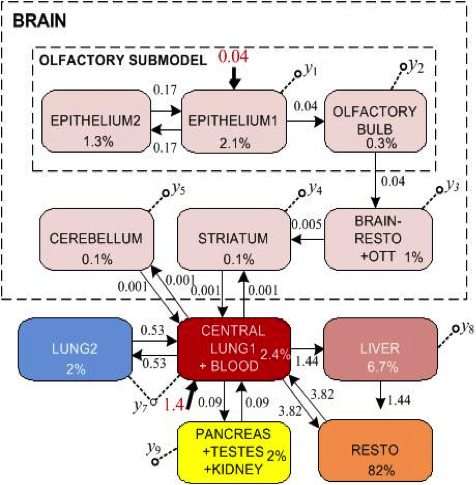- Date: March 29, 2015
- Citation: Douglas et al. J. Toxicol Environ Chem 92: 279-299 (2010)
The two routes inhaled Mn can get to the striatum are: direct transneuronal transport, via the olfactory system, and indirect transfer to brain across the blood-brain barrier – via lungs-to-blood (original hypothesis). Olfactory transport of Mn means that Mn is transported transneuronally into brain, without passing into blood or other fluid first.
Prior to this modeling study, it was not clear whether one or the other pathway dominated. The main modeling goal was to assess the relative contributions of each of these pathways quantitatively, using the rat as an experimental animal model of this process. The quantified model provided a rejection of the original hypothesis projected for this model. Instead of being one-sided, the relative contributions of olfactory (~52%) and pulmonary (~48%) pathways were estimated to be about equal.

Modern PBPK version equivalent of the Rat multicompartmental Mn distribution model

Whole body pbtk model structure with whole-body Mn distribution (% of total) and Mn compartment interchange rates as mass fluxes (μg Mn/day) shown on arrows. Figure adapted from (Douglas 2010 )